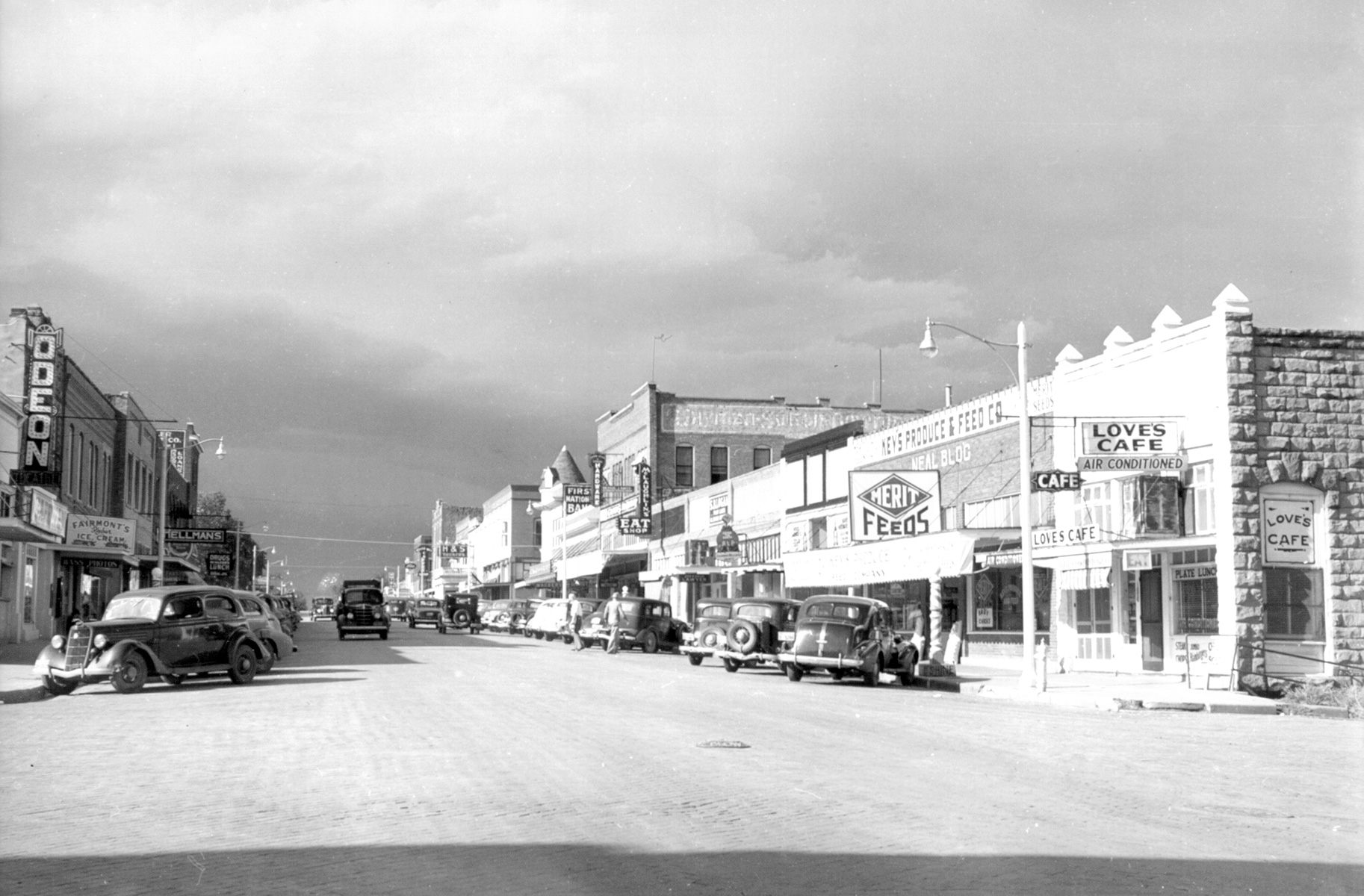
CHANDLER.
County seat of Lincoln County, Chandler is situated at the intersection of U.S. Highway 66 (Route 66) and Oklahoma Highway 18. The city's opening was set for September 22, 1891, the same date as the land run that opened the Sac and Fox and Iowa lands to form County A (Lincoln County). However, soldiers blocked the prospective settlers from entering the Chandler townsite, because the survey was not finished. Consequently, Chandler was opened for settlement at noon on September 28, 1891, when gunshots signaled the land opening. Thousands of settlers dashed up the steep hill into the 320-acre townsite for 2,208 free lots. Chandler was purposely located at the geographic center of the county and near a water supply called Indian Spring, now a city park. The post office was established September 21, 1891, and the city named for Assistant Secretary of the Interior George Chandler.
A tornado that struck on March 30, 1897, killed fourteen people, injured hundreds, and almost destroyed Chandler. By the next year sturdier brick and stone buildings were constructed. Seven of those territorial commercial buildings, two homes, and two churches are listed in the National Register of Historic Places, as are Works Progress Administration–constructed buildings, including the National Guard Armory (NR 91000276), and Route 66–related buildings. A two-story, frame building served as the courthouse from 1897 until 1907 statehood. A three-story, brick-and-stone courthouse constructed in 1907 was replaced with a new edifice completed in 1969.
The St. Louis and Oklahoma City Railroad (later the St. Louis and San Francisco Railway) built a line through Chandler in 1898, providing faster shipping for cotton as well as bricks made at the Chandler Brick Factory. Chandler had six gins and a cottonseed oil mill operating in 1910. Locally grown fruit and pecans also went to markets by rail. In November 1949 the state legislature passed Resolution Number 5 declaring Chandler "the Pecan Capital of the World." Despite oil discoveries and abundant crops, Chandler was never a boomtown. At 1907 statehood population stood at 2,234 and in 1920 at 2,226. It and rose to 2,738 by 1940 and to 2,926 in 1980.
Prominent residents have included Deputy U.S. Marshal William M. "Bill" Tilghman, frontier lawman; Benny Kent, early-day news cinema photographer; James Brooks Ayers Robertson, Oklahoma's fourth governor; Roy J. Turner, Oklahoma's thirteenth governor; Joseph C. Pringey, U.S. representative; Roy Harris, music composer; Anna Myers, author; Rev. Burton Z. Lewis, first African American member of the Oklahoma National Guard; Maj. Gen. Roy Hoffman, Oklahoma military and National Guard leader; James C. Leake, television broadcasting pioneer and renowned antique car collector; and Bo Belcher, developer of the Chandler Baseball Camp, which grew into the nation's largest athletic camp for boys.
At the turn of the twenty-first century Chandler had 2,842 citizens, and its city limits encompassed 3,200 acres. Historic Route 66, two city lakes, a golf course, and the Lincoln County Museum of Pioneer History provided opportunities for recreation. Although trains and buses no longer served Chandler, the city airport's runways were adequate for small jets. Major employers included the National American Insurance Company, Hiland Dairy plant, National Guard Armory, and state and federal government offices. The U.S. Census recorded 3,100 residents in 2010. The U.S. Census reported a population of 2,855 in April 2020.






